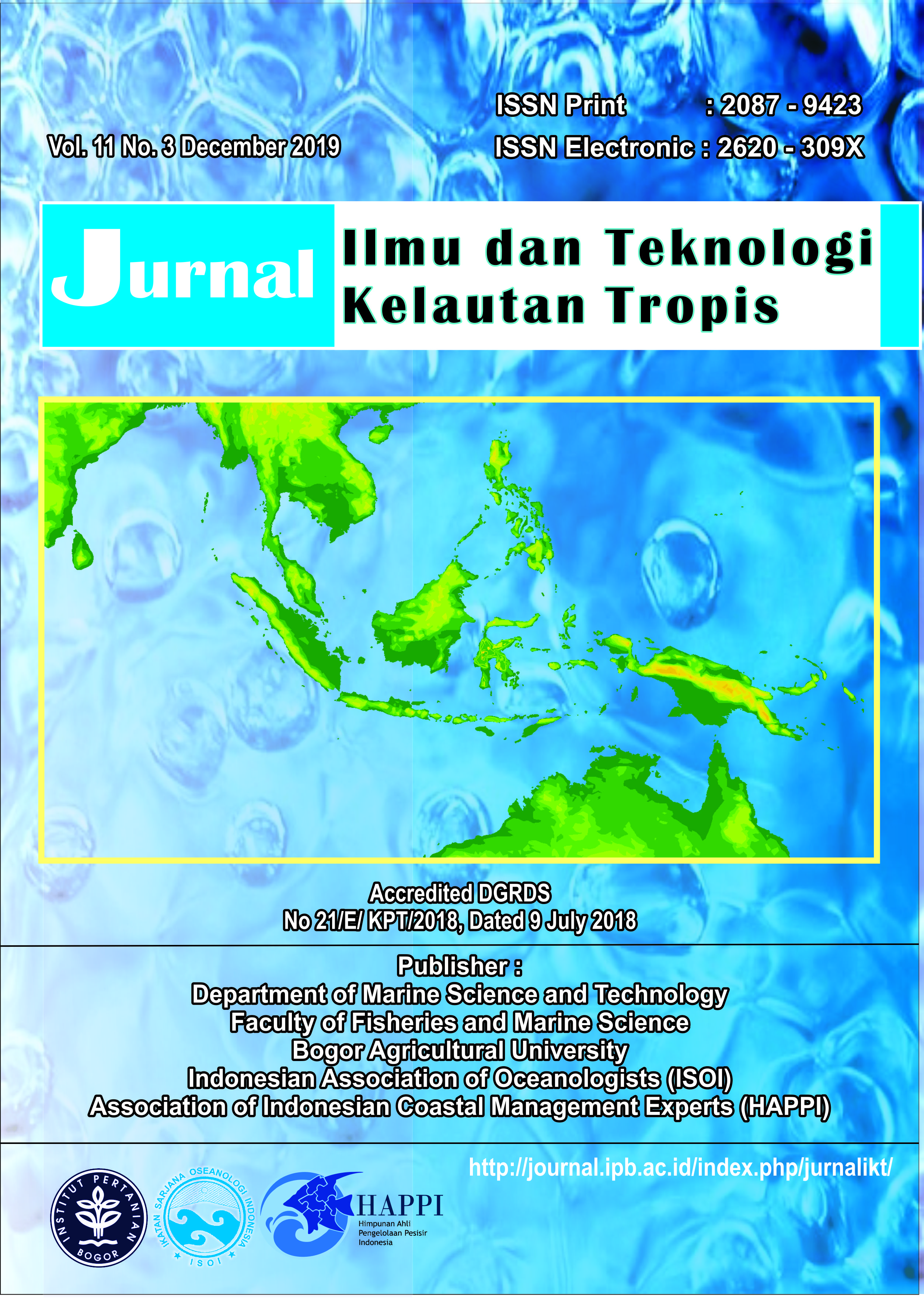ANALISIS PRIORITAS PENGELOLAAN KAWASAN KONSERVASI PERAIRAN PULAU AY-RHUN, PROVINSI MALUKU
Abstrak
Prioritas perencanaan sangat penting ditentukan untuk menjadi acuan pengelola dalam meningkatkan efektivitas pengelolaan kawasan konservasi perairan. Penelitian ini bertujuan untuk menganalisis prioritas perencanaan pengelolaan kawasan konservasi perairan daerah (KKPD) Pulau Ay-Rhun menggunakan metode Jejaring Analitik (Analytic Network Process, ANP). Permasalahan dan solusi dalam penentuan prioritas pengelolaan ini dikelompokkan menjadi empat, yakni: cluster ekologi, ekonomi, sosial, dan kelembagaan dengan masing-masing sub-cluster berdasarkan hasil diskusi kelompok terfokus (Focus Group Discussion, FGD). Hasil analisis menunjukan bahwa masalah utama kawasan konservasi perairan Pulau Ay-Rhun adalah cluster ekologi. Sementara hasil analisis sub-cluster menunjukan bahwa permasalahan prioritas pengelolaan adalah: (1) cluster kelembagaan berupa kurangnya kapasitas dan kuantitas SDM dengan nilai 0,6711; (2) cluster sosial berupa kurangnya pemahaman terkait konservasi dengan nilai 0,6340; (3) cluster ekonomi berupa ketidakstabilan harga jual hasil perikanan dengan nilai 0,5684; (4) cluster ekologi berupa penambangan pasir dan karang untuk material bangunan dengan nilai 0,4614. Mengingat sub-cluster suatu cluster dapat mempengaruhi elemen lain dalam cluster yang sama dan dapat pula mempengaruhi elemen pada cluster yang berbeda, maka rekomendasi prioritas strategi pengelolaan dalam meningkatkan efektifitas kawasan konservasi perairan Ay-Rhun adalah: (1) cluster ekonomi berupa optimalisasi pemanfaatan sesuai daya dukung dengan nilai 0,6137; (2) cluster ekologi berupa pembentukan zonasi dengan nilai 0,5484; (3) cluster kelembagaan berupa penyusunan kebijakan pengelolaan dengan nilai 0,5308; dan (4) cluster sosial berupa sosialisasi mengenai konservasi dengan nilai 0,4680.
Penulis
This work is licensed under a Creative Commons Attribution 4.0 International License.
Jurnal Ilmu dan Teknologi Kelautan Tropis i is an open-access journal, meaning that all content is freely available without charge to the user or their institution. Users are allowed to read, download, copy, distribute, print, search, or link to the full texts of the articles in this journal without needing to request prior permission from the publisher or the author.
All articles published by Jurnal Ilmu dan Teknologi Kelautan Tropis are licensed under the Creative Commons Attribution 4.0 International License. This allows for unrestricted use, distribution, and reproduction in any medium, provided proper credit is given to the original authors.
Authors submitting manuscripts should understand and agree that the copyright of published manuscripts is retained by the authors. Copyright encompasses the exclusive rights of authors to reproduce, distribute, and sell any part of the journal articles in all forms and media. Reproduction of any part of this journal, its storage in databases, and its transmission by any form or media is allowed without written permission from Jurnal Ilmu dan Teknologi Kelautan Tropis.


